Lost Edinburgh: The Forth Bridge
This article contains affiliate links. We may earn a small commission on items purchased through this article, but that does not affect our editorial judgement.
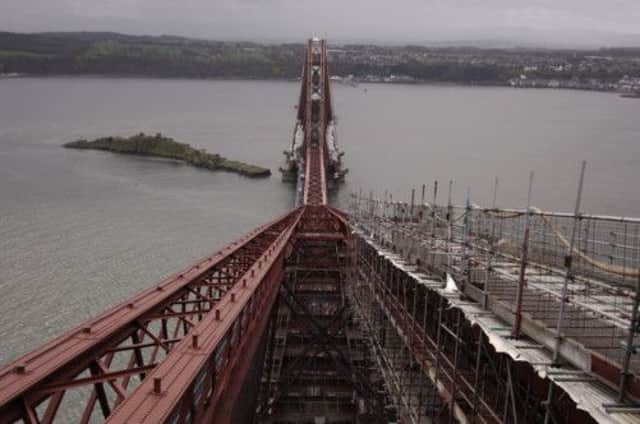

The steel cantilever Forth Bridge was designed by the reputable partnership of John Fowler and Benjamin Baker. The idea to construct a permanent rail crossing to span the Forth estuary originated in the 1870s when another engineer, Thomas Bouch, was enlisted to design a railway suspension bridge which would replace the train ferry from Granton. However, the plans came to an abrupt halt in 1879 when the Tay Bridge, also designed by Mr Bouch, tragically collapsed during bad weather, claiming the lives of all 75 on board the locomotive which had been crossing at the time.
Construction
Following the tragedy in Dundee, Bouch was relieved of his duties and a new steel cantilever design proposed in order to prevent such a disaster from taking place ever again. As well as the structure being strong and rigid enough to withstand both the weight of heavy freight trains and the battering of strong winds, the design was also required to conform to the wishes of the admiralty who stipulated that the Firth of Forth remain navigable to large ships. As a result, the Forth Bridge demanded 10 times the amount of metal as the Eiffel Tower and its rail track was constructed 150ft above the water.
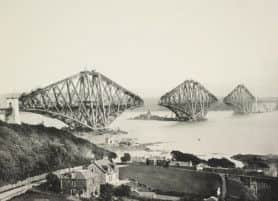

Advertisement
Hide AdAdvertisement
Hide AdWork on the foundations of the Forth Bridge began in February 1883. Its construction cost of £3m (Approximately £300m today) was split between several competing railway companies. Not only would it be the first British bridge to adopt the cantilever method and the first major British construction to be built almost entirely from steel, but at 1.5 miles long, the Forth Bridge was the longest bridge of its kind in the world - a true wonder of the Victorian age.
Casualties
Nearly 5,000 men from all over the country would be employed over a period of 7 years to work on the rail bridge and place its 6.5 million rivets. Estimates concerning casualties vary wildly, but it is thought that up to 73 workers lost their lives during construction, many of the fatalities caused by a deadly drop into the icy water below from heights of up to 360ft.
Grand opening
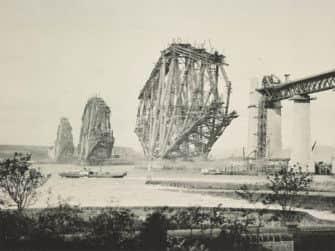

The bridge was formally opened on 4 March 1890 by the Prince of Wales (the future King Edward VII) who had the pleasure of driving home the final gold-plated rivet. The opening of the landmark crossing was a proud moment for the Scottish people who now possessed one of the finest civic structures in the British Empire.
The Forth Bridge’s record-breaking 520m cantilever span was finally surpassed in 1919 by the Quebec Bridge in Canada. Among the engineers appointed for the project was Sir Maurice Fitzmaurice – a veteran who had worked on the Forth Bridge thirty years earlier.
WWII air raid
On 16 October 1939 the Forth Bridge would provide the dramatic backdrop to the first German air raid of WWII. Shipping from the Royal Navy base at Rosyth was the Luftwaffe’s target. In this early battle, just 6 weeks into the war, the Germans were optimistic that a compromise could yet be negotiated with the British. Hitler therefore wished to avoid civilian casualties at all costs - meaning structures such as the Forth Bridge were strictly off-limits. Nevertheless, the unsuspecting passengers aboard the train carriages which trundled across the Forth that day would surely have been in panic as they witnessed the surprise attack on the British vessels.
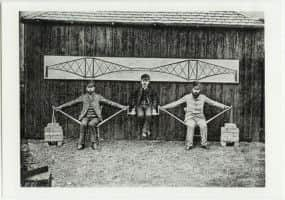

Painting the bridge
Until recently, it took a maintenance team of 30-40 painters and scaffolders over 3 years to apply the Forth Bridge’s famous rust-red coating of paint. At one time it was claimed that following each completion the paint at the other end would begin to wear off and the team would need to start again. Although the story is unlikely to hold any truth, ‘Painting the Forth Bridge’ eventually became a much-uttered expression associated with a seemingly never-ending or arduously long task. Today the bridge is coated with a type of paint which should last up to 25 years before requiring a retouch.
Since the construction of the road bridge in 1964, the Forth Bridge is often referred to as the Forth Rail Bridge in order to distinguish between the two. Both bridges were built by the same civil engineering contractor, Arrol & Co.
Advertisement
Hide AdAdvertisement
Hide AdIn 2013, the Category A listed Forth Bridge is a much-loved national treasure. It continues to support the weight of up to 200 trains a day - though it is undoubtedly admired more for its visual impact than its purpose.
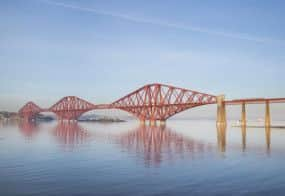

In addition to a proposal for new visitor facilities, including a glass elevator to the summit of the bridge’s south tower, an attempt to secure the Forth Bridge as a UNESCO World Heritage Site is currently underway. A bid for UNESCO status will be submitted early next year which hopes to see the 123-year old icon of engineering recognised alongside other historic international landmarks such as Stonehenge and the Pyramids of Giza.
• David McLean is the founder of the Lost Edinburgh Facebook page